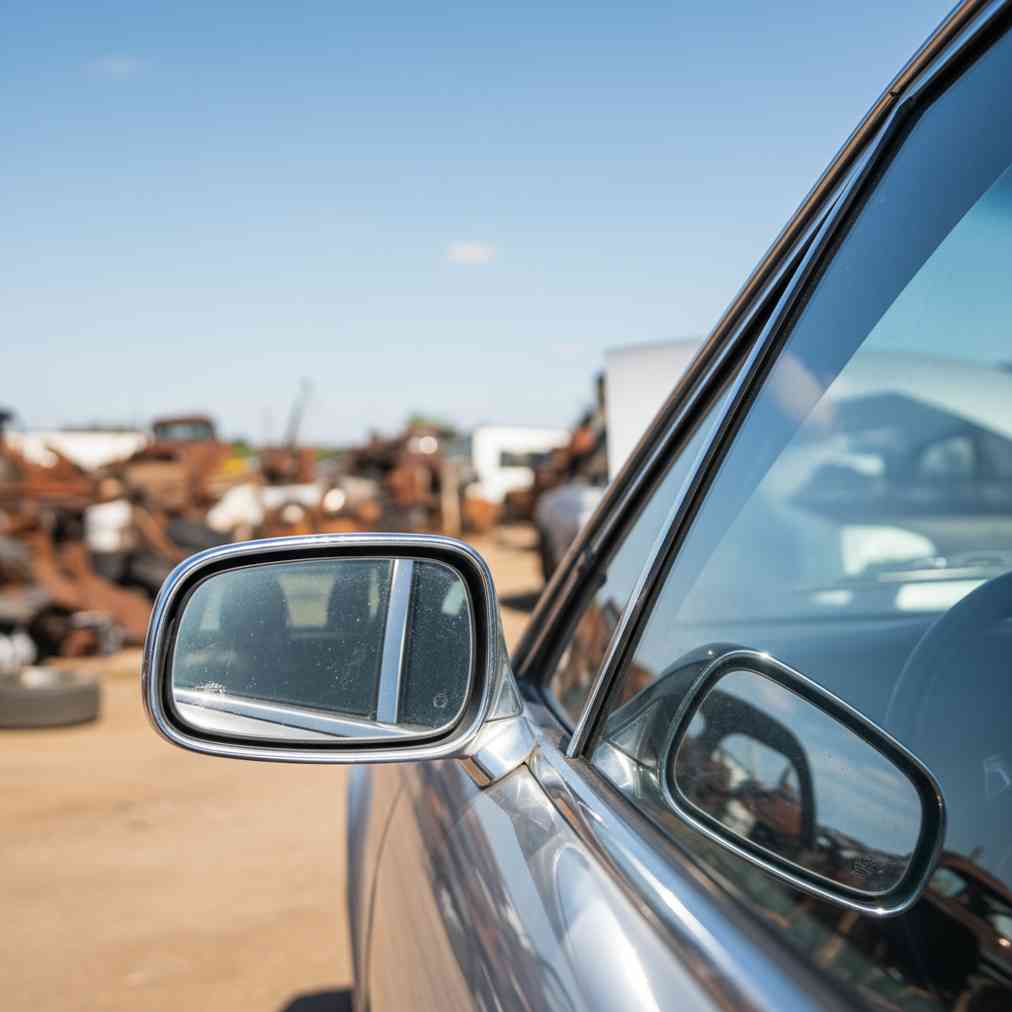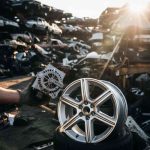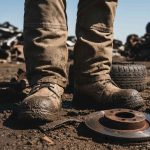Why Buying Used Glass from a Junkyard Makes Financial and Environmental Sense
When your car’s windshield, back glass, or side mirrors get damaged, the cost of replacement can quickly add up. However, there’s a smart alternative that many vehicle owners overlook: purchasing used auto glass from junkyards. This option not only offers substantial cost savings but also provides environmental benefits while maintaining quality and safety when done correctly.
Before making any purchase decisions, it’s essential to understand both the advantages and potential risks involved in buying used glass components. With proper inspection techniques and knowledge, you can make an informed choice that saves money without compromising safety.
Significant Cost Savings: The Primary Advantage
The most compelling reason to consider used auto glass from salvage yards is the dramatic cost difference compared to new parts. According to industry experts, used windshields can cost 40-60% less than new ones, representing savings of hundreds of dollars per replacement.
| Glass Type | New Cost Range | Used Cost Range | Potential Savings |
|---|---|---|---|
| Windshield | $150 – $300+ | $50 – $120 | $100 – $180 |
| Side Windows | $100 – $200 | $25 – $75 | $75 – $125 |
| Back Glass | $200 – $400 | $60 – $150 | $140 – $250 |
| Side Mirrors | $80 – $250 | $20 – $80 | $60 – $170 |
For owners of classic or vintage vehicles, the savings can be even more substantial. OEM parts for older models are often extremely expensive or unavailable new, making salvage yards the only viable source for original equipment glass.
Wide Selection and Availability Benefits
Junkyards typically maintain extensive inventories from various vehicle makes and models, increasing your chances of finding the exact glass component you need. This extensive selection offers several advantages:
- Immediate availability for many common vehicle models
- Access to discontinued parts for older vehicles
- Multiple options to compare condition and pricing
- Same-day replacement possibility without waiting for special orders
- Original equipment specifications that perfectly match your vehicle
When searching for specific parts, you can use resources to find junkyards near me that specialize in your vehicle’s make and model, ensuring better chances of locating the exact glass component you need.
Environmental Impact and Sustainability
Choosing used auto glass contributes significantly to environmental conservation efforts. The automotive glass manufacturing process requires substantial energy and raw materials, including silica sand, soda ash, and limestone, which must be heated to extremely high temperatures.
Reusing auto glass reduces landfill waste and lessens the demand for new manufacturing, contributing to environmental conservation while supporting the circular economy principles.
By purchasing salvaged glass, you’re participating in the automotive recycling industry, which prevents millions of tons of materials from entering landfills annually. This choice aligns with growing environmental consciousness and sustainable consumption practices.
Understanding the Risks and Limitations
While the benefits are substantial, it’s crucial to understand the potential drawbacks and risks associated with used auto glass purchases:
Unknown History and Hidden Damage
The primary concern with used glass is its unknown history. Previous impacts, stress, or improper removal may have compromised the glass’s structural integrity, even if damage isn’t immediately visible. Microscopic cracks or internal stress points could lead to sudden failure.
Warranty and Insurance Considerations
Installing used auto glass may affect your vehicle’s warranty coverage, as some manufacturers require OEM parts for replacements. Additionally, insurance companies might have specific requirements for glass replacement that could impact your coverage or claims process.
Professional installers may also decline to work with used glass due to liability concerns, as noted in expert industry analysis.
Comprehensive Inspection Guide for Used Auto Glass
Proper inspection is crucial for ensuring the safety and quality of used auto glass. Follow this detailed checklist before making any purchase:
Visual Inspection Checklist
- Surface examination: Look for any cracks, chips, or star breaks, no matter how small
- Edge inspection: Check for chips, burrs, or damage from removal process
- Scratch assessment: Identify deep scratches that could impair visibility
- Clarity verification: Ensure no cloudiness, haze, or distortion exists
- Discoloration check: Look for any tinting irregularities or fade marks
Structural and Fitment Verification
- Tap test: Gently tap the glass surface to listen for consistent sound (dull spots indicate internal damage)
- Mounting points: Inspect attachment hardware for damage or corrosion
- Dimension matching: Verify exact measurements match your vehicle specifications
- Part number confirmation: Cross-reference manufacturer part numbers when available
- Seal condition: Check rubber seals and moldings for integrity and flexibility
Special Considerations for Different Glass Types
| Glass Type | Key Inspection Points | Safety Priority Level |
|---|---|---|
| Windshield | Structural integrity, lamination condition, no delamination | Critical |
| Side Windows | Tempered glass integrity, smooth edges, proper thickness | High |
| Back Glass | Heating element functionality (if equipped), no stress points | High |
| Side Mirrors | Reflective coating condition, housing integrity, adjustment mechanisms | Moderate |
For more detailed information on back window replacement costs and considerations, consult specialized resources that can help you make informed decisions about your specific vehicle needs.
Professional Installation vs. DIY Considerations
The installation process for used auto glass requires careful consideration of your skill level and the specific safety requirements of different glass types.
When Professional Installation is Essential
- Windshields: Critical structural component requiring precise installation
- Safety-related glass: Components that affect airbag deployment or roof support
- Complex sealing requirements: Modern vehicles with advanced sealing systems
- Warranty preservation: When maintaining manufacturer warranty coverage is important
According to safety experts, improper installation can compromise the glass’s ability to function as a safety component, potentially affecting crash protection and structural integrity.
DIY-Friendly Glass Replacements
- Side mirrors: Generally straightforward with basic tools
- Quarter windows: Simple installations on many vehicle models
- Non-structural side windows: Lower safety risk installations
Economic Impact and Market Trends
The used auto parts market, including glass components, continues to grow as consumers seek cost-effective alternatives to new parts. Industry analysis shows several driving factors:
- Rising new part costs: Inflation and supply chain issues increase new glass prices
- Vehicle longevity: Americans keeping cars longer increases demand for affordable repairs
- Environmental awareness: Growing consumer preference for sustainable choices
- Economic pressures: Budget-conscious consumers seeking maximum value
For those considering selling their vehicle instead of repairing it, exploring options for cash for cars might provide a better financial solution than expensive glass replacement.
Best Practices for Purchasing Used Auto Glass
To maximize your success when buying used glass from junkyards, follow these proven strategies:
Research and Preparation
- Verify exact part numbers and specifications for your vehicle
- Research market prices for both new and used alternatives
- Contact multiple yards to compare inventory and pricing
- Understand return policies and warranty terms offered
- Prepare necessary tools for removal if purchasing from self-service yards
Negotiation and Purchase Tips
- Inspect thoroughly before committing to purchase
- Ask about vehicle history and reason for salvage
- Negotiate based on condition and any identified issues
- Request professional removal to minimize damage risk
- Secure proper transportation to prevent damage during transport
As highlighted in comprehensive salvage yard guides, taking time for proper evaluation and preparation significantly increases your chances of a successful purchase.
Quality Assessment and Long-term Reliability
Understanding how to assess the long-term reliability of used auto glass helps ensure your investment provides lasting value:
Age and Degradation Factors
| Factor | Impact on Glass | Assessment Method |
|---|---|---|
| UV Exposure | Lamination degradation, tinting fade | Check for cloudiness or discoloration |
| Temperature Cycling | Internal stress, micro-fractures | Listen for sound variations during tap test |
| Impact History | Hidden stress points, weakened structure | Examine for star patterns or stress marks |
| Chemical Exposure | Surface etching, seal degradation | Feel for rough spots or chemical staining |
Performance Expectations
Properly selected and installed used auto glass can provide years of reliable service. However, realistic expectations include:
- Shorter warranty periods compared to new glass
- Potential for earlier replacement due to accumulated wear
- Limited recourse for manufacturing defects or recalls
- Variable performance based on previous usage conditions
Industry Expert Recommendations
Automotive glass professionals and salvage yard experts provide valuable insights for consumers considering used glass purchases:
While used glass offers significant cost savings, safety should never be compromised. Always prioritize structural integrity over price, especially for windshields that serve as critical safety components.
Industry recommendations from professional automotive resources emphasize the importance of thorough inspection and professional assessment when safety-critical components are involved.
When to Choose New Over Used
- Safety-critical applications: High-speed driving or commercial use
- Luxury or high-end vehicles: Where warranty preservation is important
- Advanced glass features: Heads-up displays, rain sensors, or heating elements
- Insurance coverage: When insurance covers new glass replacement
- Long-term ownership plans: When vehicle will be kept for many years
Future Trends and Technology Considerations
As automotive technology advances, the used auto glass market faces new challenges and opportunities:
Advanced Driver Assistance Systems (ADAS)
Modern vehicles increasingly incorporate sensors and cameras into windshields and other glass components. Used glass from ADAS-equipped vehicles requires special consideration:
- Calibration requirements: Systems may need recalibration after installation
- Sensor compatibility: Ensuring sensors match vehicle specifications
- Software integration: Verifying electronic components function properly
- Professional installation necessity: ADAS systems typically require expert installation
Electric Vehicle Considerations
As electric vehicles become more common, their glass components may have unique characteristics that affect the used parts market, including specialized heating elements and different mounting requirements.
Making the Final Decision: Cost vs. Risk Analysis
The decision to purchase used auto glass from a junkyard ultimately depends on weighing potential savings against associated risks. Consider these key factors:
| Decision Factor | Favors Used Glass | Favors New Glass |
|---|---|---|
| Budget Constraints | Significant cost savings needed | Budget allows for new parts |
| Vehicle Age/Value | Older, lower-value vehicles | Newer, high-value vehicles |
| Safety Requirements | Non-critical glass components | Structural or safety-critical glass |
| Availability | Rare or discontinued parts | Common, readily available parts |
| Warranty Concerns | Out of warranty vehicles | Warranty preservation important |
Conclusion: Smart Shopping for Auto Glass
Purchasing used auto glass from junkyards can provide substantial cost savings while supporting environmental sustainability efforts. The key to success lies in thorough inspection, understanding the associated risks, and making informed decisions based on your specific circumstances.
For non-critical applications and budget-conscious consumers, used glass from reputable salvage yards offers an excellent alternative to expensive new parts. However, safety should never be compromised, particularly for structural components like windshields.
As noted in professional windshield replacement resources, the decision should always prioritize safety while considering economic factors. With proper research, inspection, and installation, used auto glass can provide years of reliable service at a fraction of the cost of new components.
Whether you’re maintaining an older vehicle, restoring a classic car, or simply seeking cost-effective repair solutions, understanding the benefits and limitations of used auto glass empowers you to make the best decision for your specific needs and circumstances.





Leave a Reply
You must be logged in to post a comment.